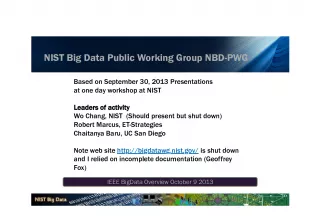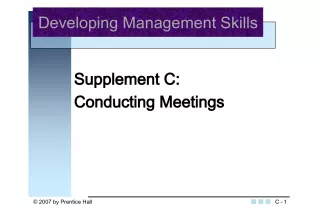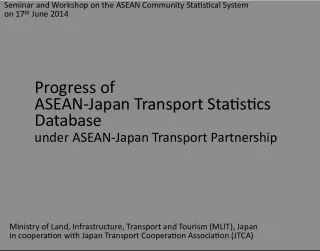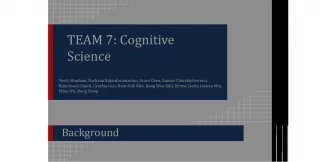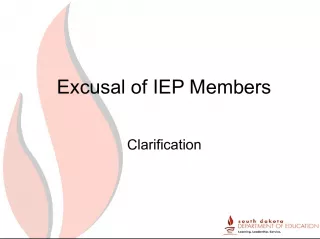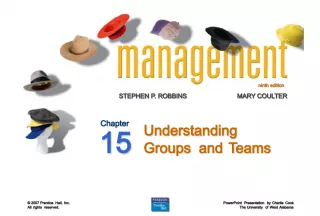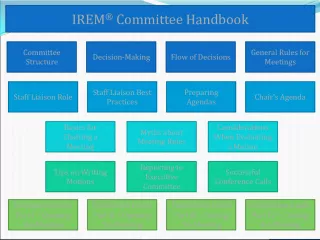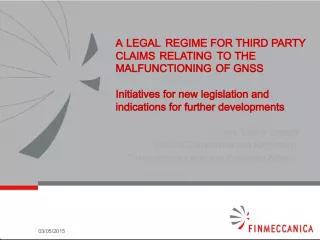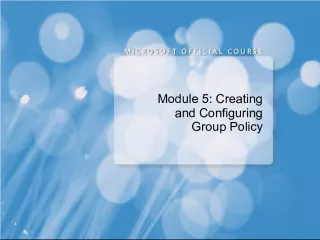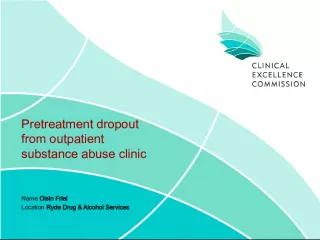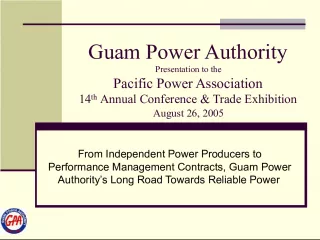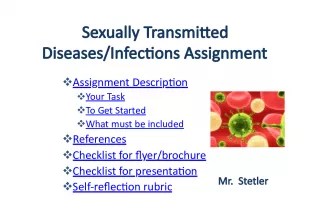T Ad Hoc Team Proposal at UN Working Group Meetings in Kyoto, Japan


The UN Working Group Meetings in Kyoto, Japan saw the proposal of an ad hoc team by T for addressing key issues. The proposal was presented and discussed by experts from various fields.
- Uploaded on | 0 Views
-
 kamiyahmraz
kamiyahmraz
About T Ad Hoc Team Proposal at UN Working Group Meetings in Kyoto, Japan
PowerPoint presentation about 'T Ad Hoc Team Proposal at UN Working Group Meetings in Kyoto, Japan'. This presentation describes the topic on The UN Working Group Meetings in Kyoto, Japan saw the proposal of an ad hoc team by T for addressing key issues. The proposal was presented and discussed by experts from various fields.. The key topics included in this slideshow are Ad hoc team, UN Working Group Meetings, Kyoto, Proposal, Key issues,. Download this presentation absolutely free.
Presentation Transcript
1. -40C 70C C C UN Working Group Meetings Kyoto, Japan 9 11 November 2009 T2 Ad Hoc Team Proposal T2 Ad Hoc Team Proposal UN Working Group Meetings 9 11 November 2009 Kyoto, Japan 1
2. -40C 70C C C UN Working Group Meetings Kyoto, Japan 9 11 November 2009 T2 Ad Hoc Team T2 Ad Hoc Team Team Leader Marc Boolish (Energizer) Team Members Angie Crane: Altairnano Gary Drew: Sanyo Ronald Elder: Chrysler George Kerchner: PRBA Mike Sink: Saft Drafted Team Member Charlie Monahan: Panasonic 2
3. -40C 70C C C UN Working Group Meetings Kyoto, Japan 9 11 November 2009 Proposals Proposals 1. Mass loss table categories 2. Temperature transition time 3. Maximum temperature 4. Number of test cycles (clarification) 5. No longer test time for large format battery types 3 Mass M of cell or battery Mass loss limit M < 1 g 0.5% 1 g < M < 5 g 0.2% M 5 g 0.1%
4. -40C 70C C C UN Working Group Meetings Kyoto, Japan 9 11 November 2009 Mass Loss Table Categories Mass Loss Table Categories Proposal 1 Mass M of cell or battery Mass loss limit M < 1 g 0.5% 1 g < M < 5 g 0.2% M 5 g 0.1% 4 There are many batteries that exceed 5 g Some types exceed 1 kg Per the Paris minutes, we were to review the categories and make proposal(s) Focus on the middle category Perform Lower Explosion Limit (LEL) calculations Existing Mass Loss Limits
5. -40C 70C C C UN Working Group Meetings Kyoto, Japan 9 11 November 2009 Lithium Battery Universe Lithium Battery Universe Natural Division 5 Proposal 1 Example: There are 5 different battery offerings from these 6 companies that weigh 18 grams
6. -40C 70C C C UN Working Group Meetings Kyoto, Japan 9 11 November 2009 Lower Explosion Limit Lower Explosion Limit Review Items Volumes of: Unit load devices (ULDs) Cargo holds Battery weight in cargo Lower explosion limits of electrolytes Calculations using Ideal Gas Law 6 Proposal 1 LD-3 LD-8
7. -40C 70C C C UN Working Group Meetings Kyoto, Japan 9 11 November 2009 Weight Loss to Reach Lower Explosion Limit Weight Loss to Reach Lower Explosion Limit 7 Proposal 1 Battery Type Energizer L92 AAA Lithium Height (mm) 44.5 Chemistry Lithium Iron Disulfide Diameter (mm) 10.5 Battery Weight 7.6 grams Volume (m 3 ) 3.85131E-06 Battery Volume 3.85131E-06 cubic meters Electrolyte DME/Dioxolane mixture Lower Explosive Limit (LEL)* 1.90 % Molecular Weight Electrolyte* 78.97 g/mol Electrolyte partial pressure at LEL 0.019367992 atm Total Container Pressure at LEL 1.019367992 atm Cargo Area Main Deck Forward Aft Bulk Compartment Empty Volume (m 3 ) 259 63 21 22.6 Void Volume (15% Volume) m 3 38.85 9.45 3.15 3.39 Battery Volume (85% Volume) m 3 220.15 53.55 17.85 19.21 Total batteries in shipment 57162396 13904367 4634789 4987916 Total battery weight (kg) 434434.2093 105673.186 35224.39535 37908.1588 Maximum permitted weight (kg) 41500 25175 9250 6750 Total batteries at max weight 5460526 3312500 1217105 888158 Volume batteries at max weight (m 3 ) 21.03 12.76 4.687447389 3.420569716 New Void Volume (m 3 )** 237.97 50.24 16.31255261 19.17943028 Use Ideal Gas Law PV=nRT Total Pressure (P) (atm) 1.019367992 1.019367992 1.019367992 1.019367992 Total Volume (V) (m 3 ) 237.97 50.24 16.31 19.18 R value (m 3 x atm/mol x K) 0.00008205 0.00008205 0.00008205 0.00008205 Temperature (21C) in K 294 294 294 294 Moles Electrolyte at LEL (n) 10056.03968 2123.130453 689.3297184 810.4771577 Grams Electrolyte at LEL 794125.4535 167663.6119 54436.36786 64003.38115 Grams per battery at LEL 0.145430204 0.05061543 0.044726097 0.072063066 Percentage of battery weight 1.91355531 0.6659925 0.588501274 0.948198239
8. -40C 70C C C UN Working Group Meetings Kyoto, Japan 9 11 November 2009 Weight Loss to Reach Lower Explosion Limit Weight Loss to Reach Lower Explosion Limit 8 Proposal 1 Cargo Area Main Deck Empty Volume (m 3 ) 259 Void Volume (15% Volume) m 3 38.85 Battery Volume (85% Volume) m 3 220.15 Total batteries in shipment 57,162,396 Total battery weight (kg) 434,434.2093 Maximum permitted weight (kg) 41,500 Total batteries at max weight 5,460,526 Volume batteries at max weight (m 3 ) 21.03 New Void Volume (m 3 )** 237.97 Use Ideal Gas Law PV=nRT Total Pressure (P) (atm) 1.019367992 Total Volume (V) (m 3 ) 237.97 R value (m 3 x atm/mol x K) 0.00008205 Temperature (21C) in K 294 Moles Electrolyte at LEL (n) 10,056.03968 Grams Electrolyte at LEL 794,125.4535 Grams per battery at LEL 0.145430204 Percentage of battery weight 1.91355531 7.6 g
9. -40C 70C C C UN Working Group Meetings Kyoto, Japan 9 11 November 2009 Weight Loss to Reach Lower Explosion Limit Weight Loss to Reach Lower Explosion Limit Chemistry Size Weight Loss (%) of Every Cell to Reach LEL Unit Load Devices 747C Cargo Hold IATA AAF / US LD-26 IATA AKE / US LD-3 Main Deck Forward Aft Bulk Compartment LiMnO 2 Largest 355 g 0.63 0.83 2.17 0.75 0.66 1.07 Smallest 0.6 g 0.71 0.9 2.25 0.83 0.74 1.15 LiFeS 2 Largest 32 g 0.56 0.73 1.91 0.67 0.58 0.94 Smallest 7.6 g 0.56 0.73 1.91 0.67 0.59 0.95 LiSOCl 2 Largest 1 kg Non-flammable electrolyte Smallest 7 g LiSO 2 Largest 3 kg Smallest 8 g Lithium Ion 18650 Average 45.5 g 0.80 1.03 2.61 0.94 0.84 1.32 9 Proposal 1 Every single cell in a maximum weight shipment would have to lose 1.91% weight to reach the LEL Every single cell in a maximum weight shipment would have to lose 1.91% weight to reach the LEL
10. -40C 70C C C UN Working Group Meetings Kyoto, Japan 9 11 November 2009 Mass Loss Table Categories Mass Loss Table Categories Preferred Proposal Mass M of cell or battery Mass loss limit M < 1 g 0.5% 1 g < M < 5 g 0.2% M 5 g 0.1% Mass M of cell or battery Mass loss limit Any Size 0.25% 10 Proposal 1
11. -40C 70C C C UN Working Group Meetings Kyoto, Japan 9 11 November 2009 Mass Loss Table Categories Mass Loss Table Categories Concerns expressed on 0.25% for batteries less than 1 g. Largest cells have less issue with 0.1%. 11 Proposal 1
12. -40C 70C C C UN Working Group Meetings Kyoto, Japan 9 11 November 2009 Mass Loss Table Categories Mass Loss Table Categories Mass M of cell or battery Mass loss limit M < 1 g 0.5% M 1 g 0.25% Mass M of cell or battery Mass loss limit M < 1 g 0.5% 1 g M < 75 g 0.2% M 75 g 0.1% Alternate Consideration 1 Alternate Consideration 2 12 Proposal 1
13. -40C 70C C C UN Working Group Meetings Kyoto, Japan 9 11 November 2009 Temperature Transition Time Temperature Transition Time Proposal 2 Difficulty moving temperature chambers from hot to cold or reverse Heat / cold sinks batteries in chambers Multiple chamber use Larger batteries and moving equipment Operator exposure protection Actual temperature transition in airplanes Closer to 1 hour in simulations 30 minutes 60 minutes 13
14. -40C 70C C C UN Working Group Meetings Kyoto, Japan 9 11 November 2009 Temperature Transition Time Experiment Temperature Transition Time Experiment Nalgene HDPE Bottle Cold temperature extreme of -100C Melting point of 130 137C Bubble Wrap Flash point above 260C Melting point = 93C Thermocouple placed inside bottle and oven T2 test performed (no batteries) 14 Proposal 2
15. -40C 70C C C UN Working Group Meetings Kyoto, Japan 9 11 November 2009 Temperature Transition Time Experiment Temperature Transition Time Experiment 15 Proposal 2
16. -40C 70C C C UN Working Group Meetings Kyoto, Japan 9 11 November 2009 Temperature Transition Time Experiment Temperature Transition Time Experiment Close-up of Each Cycle 16 Proposal 2 60 minutes is much more realistic
17. -40C 70C C C UN Working Group Meetings Kyoto, Japan 9 11 November 2009 Maximum Temperature Maximum Temperature Proposal 3 Avoids nuisance issues without significant change Activation of thermal safety devices Distortion of battery cases/components Electrolyte boiling Insulating label damage. 75 C 70 C 17
18. -40C 70C C C UN Working Group Meetings Kyoto, Japan 9 11 November 2009 Cycle Clarification Cycle Clarification Proposal 4 Occasional confusion with test labs and regulators on 10 vs 11 cycles Clarifying 10 cycles No change or effect on test Makes requirement perfectly clear for all readers 18
19. -40C 70C C C UN Working Group Meetings Kyoto, Japan 9 11 November 2009 Extra Exposure Time for Large Cells Extra Exposure Time for Large Cells Proposal 5 Eliminate the requirement Transport is identical for all batteries regardless of size New UN Subcommittee definition (> 12 g) significantly narrows differences between large and small batteries. Longer test time Two different shifts running each cycle Dramatic additional cost 19
20. -40C 70C C C UN Working Group Meetings Kyoto, Japan 9 11 November 2009 T2 If Proposals Accepted T2 If Proposals Accepted 20 Existing Language Proposed Language 38.3.4.2 Test 2: Thermal test 38.3.4.2.1 Purpose This test assesses cell and battery seal integrity and internal electrical connections. The test is conducted using rapid and extreme temperature changes. 38.3.4.2.2 Test procedure Test cells and batteries are to be stored for at least six hours at a test temperature equal to 75 2 C, followed by storage for at least six hours at a test temperature equal to - 40 2 C. The maximum time interval between test temperature extremes is 30 minutes. This procedure is to be repeated 10 times, after which all test cells and batteries are to be stored for 24 hours at ambient temperature (20 5 C.). For large cells and batteries the duration of exposure to the test temperature extremes should be at least 12 hours. 38.3.4.2.3 Requirement Cells and batteries meet this requirement if there is no mass loss, no leakage, no venting, no disassembly, no rupture and no fire and if the open circuit voltage of each test cell or battery after testing is not less than 90% of its voltage immediately prior to this procedure. The requirement relating to voltage is not applicable to test cells and batteries at fully discharged states. 38.3.4.2 Test 2: Thermal test 38.3.4.2.1 Purpose This test assesses cell and battery seal integrity and internal electrical connections. The test is conducted using rapid and extreme temperature changes. 38.3.4.2.2 Test procedure Test cells and batteries are to be stored for at least six hours at a test temperature equal to 75 70 2 C, followed by storage for at least six hours at a test temperature equal to - 40 2 C. The maximum time interval between test temperature extremes is 30 60 minutes. This procedure is to be repeated until 10 total cycles are complete times , after which all test cells and batteries are to be stored for 24 hours at ambient temperature (20 5 C.). For large cells and batteries the duration of exposure to the test temperature extremes should be at least 12 hours. 38.3.4.2.3 Requirement Cells and batteries meet this requirement if there is no mass loss, no leakage, no venting, no disassembly, no rupture and no fire and if the open circuit voltage of each test cell or battery after testing is not less than 90% of its voltage immediately prior to this procedure. The requirement relating to voltage is not applicable to test cells and batteries at fully discharged states.
21. -40C 70C C C UN Working Group Meetings Kyoto, Japan 9 11 November 2009 Thank You 21


